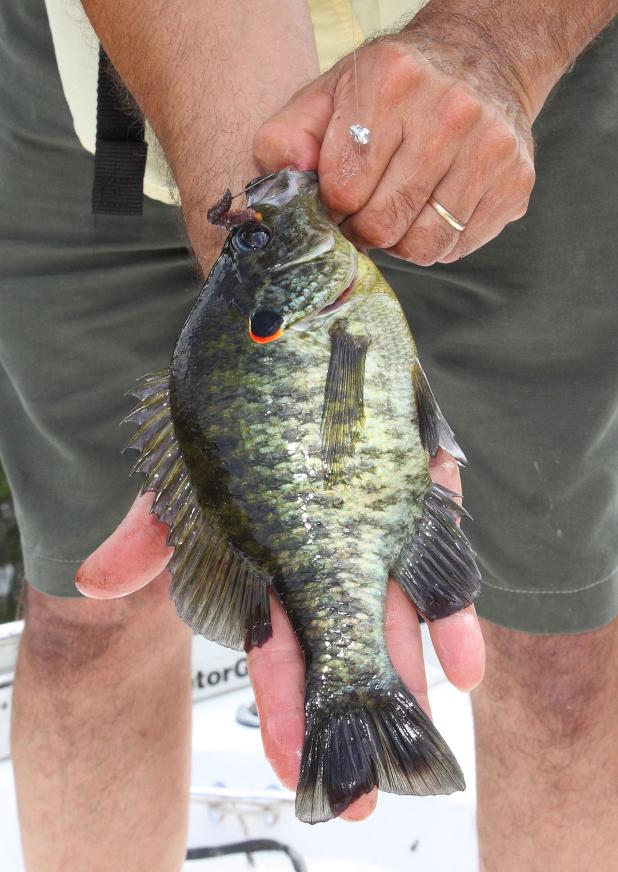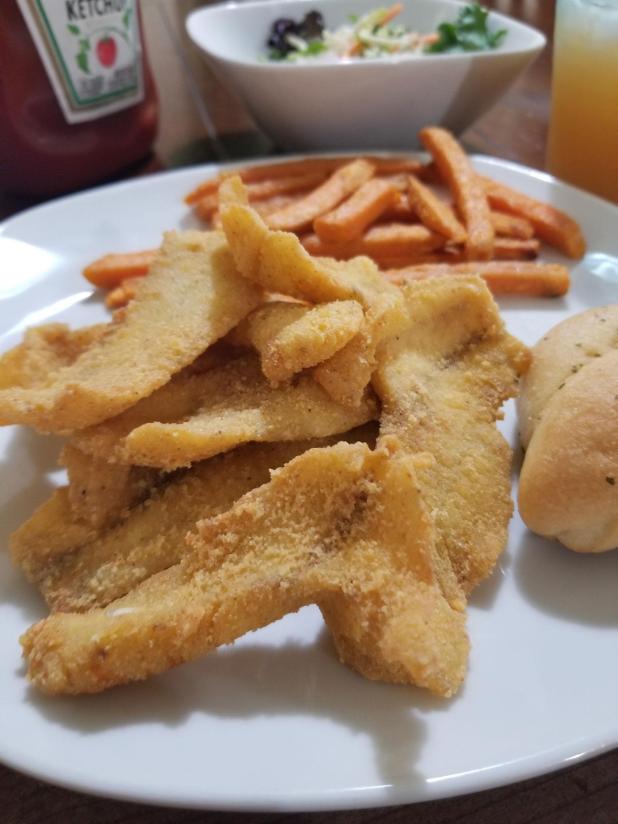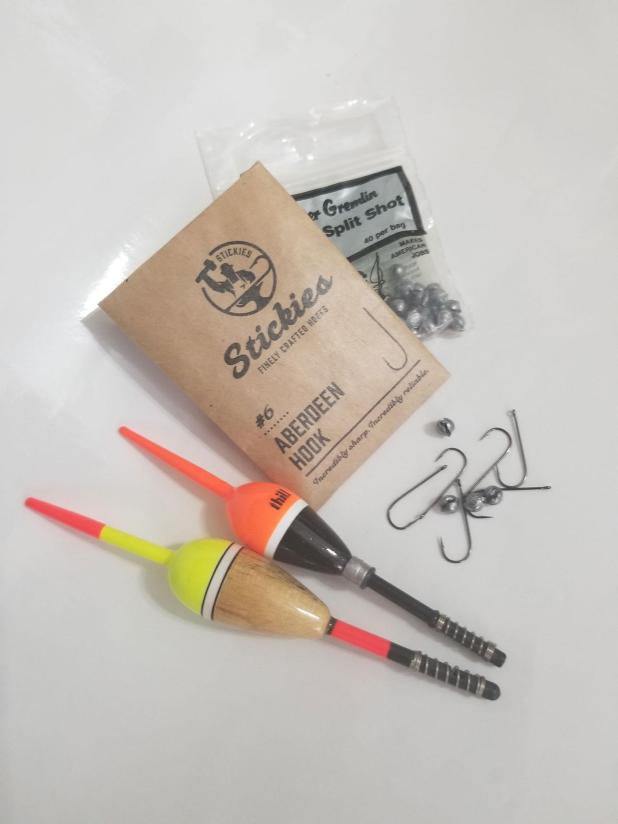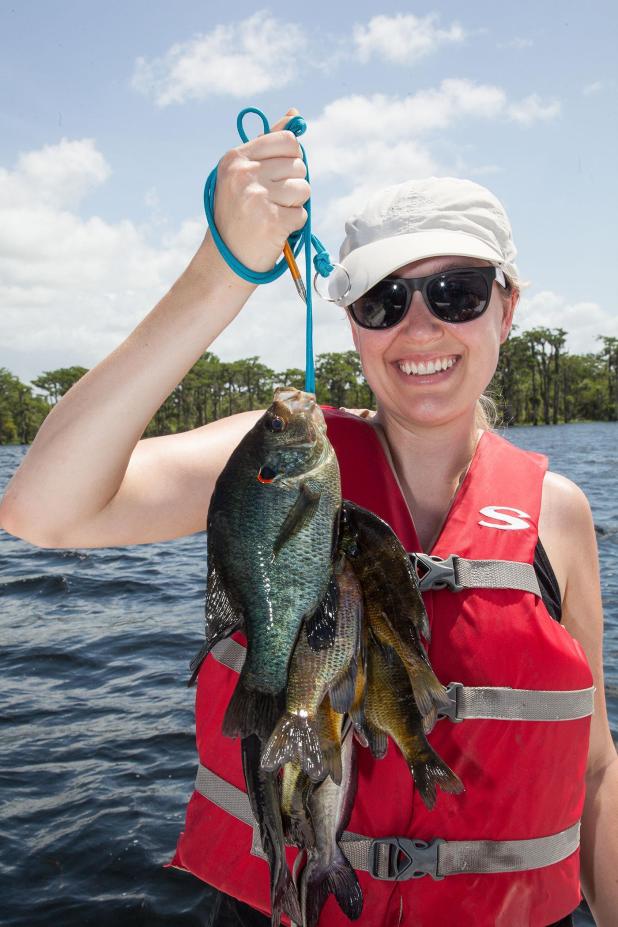
The Review/John K. Flores
Bream like this jumbo redear sunfish can be caught within minutes from most local St. Mary Parish boat landings.

There are few things that taste better than fried bream.

This is the author's keeping it simple tackle for catching bream.

The author’s daughter-in-law, Kristi Flores, shows a good catch of bluegills and redear sunfish.
John K. Flores: May is the best month for bream action
When it comes to fishing, the month of May is hard to beat whether in fresh or saltwater. On one social media report is a guy slaying the speckled trout and on another it’s a guy filling an ice chest with hungry bream.
It’s bream that gets most of my attention when the trees are bright green with new foliage and the best music in the Atchafalaya Basin comes from the Prothonotary warblers. It’s the time of year when the weather at first light is not too hot or cold. And, when that water temperature hits 75 to 77 degrees, generally the bream bite is on.
Another thing. bream fishing doesn’t take a lot of fancy gear, or the next greatest electronic invention. About the only thing today’s electronics “don’t” do is put the fish in the boat and subsequently clean them.
I’m not dissing electronics, mind you. They have their place. I’m just all about keeping things simple, and simple enough where a three-year-old can catch a fish.
Simple is using a Thill spring float or plastic bobber, with a No. 6 to No. 10 panfish hook, and a No. 5 to No. 7 split shot set 8 to 12 inches above the hook.
Just to give you a point of reference, a No. 5 split shot weighs 1/13th of an ounce and a No. 7 split shot weighs 1/24th of an ounce. The idea is to add only enough weight where the spring float bobber is perfectly vertical.
There’s nothing like watching the expression on a child’s face when their float begins to teeter back and forth and suddenly sinks.
Then there are those folks who are artificial bait enthusiasts. They’re the guys who are going to troll and chuck baits along the banks trying to outfox a bass, crappie, bluegill or chinquapin. It’s just what they do.
Good friend and Patterson local Gerald Foulcard is one of those guys who, no matter what, is going to fish something plastic regardless of the species of fish fresh or saltwater. There’s no box of earth worms or crickets when he fishes bream.
When talking with him about artificial lures for bream, Foulcard said, “The baits I would use for bream without a doubt will be something in a crawfish pattern, with some brown, green, orange colors and maybe some grass shrimp imitator colors like blue and white or red and white tubes. If the water is stained to murky, I’d use black and chartreuse tubes or hair jigs under a cork or bobber stopper with a 1/16th ounce weight.”
When it comes to locations, bream can be found just about anywhere. In the spring I’ve found them in shallow flats in 3-5 feet of water near cypress trees where a bayou opens into a lake. I’ve also found them in dead end canals around fallen trees.
Foulcard said, “Cypress trees, sloughs, and points would be my favorite places to try, and even though it can be rewarding, expect to get hung up in cypress knees when vertically jigging.”
Some of the best bream fishing for St. Mary anglers is literally minutes away from most local boat ramps.
One area Foulcard recommends is the Quintana oil and gas fields that can be accessed from the boat launch underneath the Intracoastal Waterway Bridge along La. 317 near the Carbon Black plants.
In the Atchafalaya Basin, American Lake, Duck Lake and Flat Lake are all known to produce good catches of bream. You can get to these locations from either Wilson or Russo landings.
In years past, I’ve fished bream in the Exxon field canals starting about two miles north out of Amelia Public Boat Launch east of Lake Palourde. All of these canals have plenty of fishy locations where you can pick up a few bluegills and redear sunfish.
Don’t ever rule out fishing the marsh. From Gibson to Franklin, there is some terrific bream fishing south of the Intracoastal waterway.
In the marsh, fish any drains flowing into canals or bayous. Never pass up small bayous flowing into larger ones. Fish flats along the edge of flag grass in 2-3 feet of water.
Don’t discredit bream as nonfighters either.
One of my former editors at Louisiana Sportsman Magazine told me how he loved to fish redear sunfish (aka: chinquapin, shell crackers and lake runners) and said, pound for pound, there’s no fish that fights harder. I’d have to agree. On light tackle they can be fun to wrestle with.
Lastly, when it comes to table fare, there’s nothing like a plate of fried bream with a side of white beans and rice. What’s more, May is one of the best months to catch ’em.
John Flores is the Morgan City Review’s outdoor writer. He can be contacted at gowiththeflo@cox.net.
